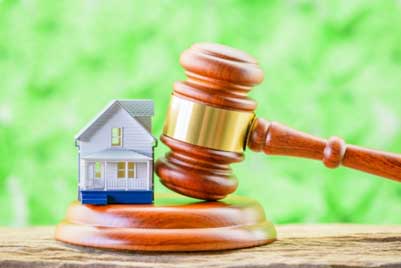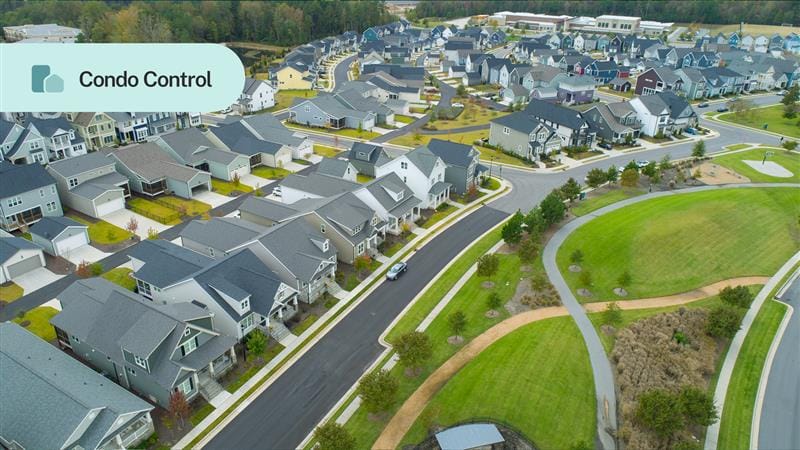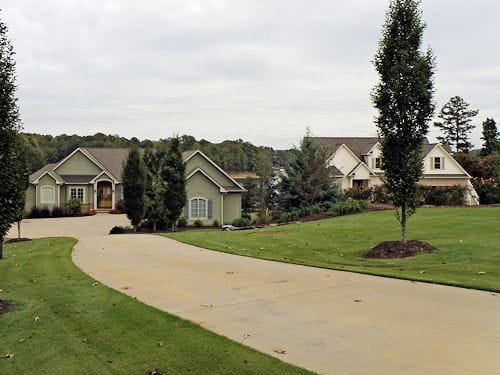Homeowners Associations (HOAs) are held accountable not only by the wants and needs of its community members, but are also governed by statutes:
- Federal
- State
- local
Additionally, HOAs have their own covenants, conditions, and restrictions (CC&Rs) they must abide by.
Because HOAs are responsible for so many things ranging from financial management to repairs and upkeep and beyond, legal requirements are in place to make sure HOAs operate efficiently and within the parameters of their legal obligations.
In fact, in the US, an overwhelming 335, 000 communities are managed by HOAs, with this volume of HOAs and board members, it’s very likely that some HOA board members don’t know what their legal obligations are, nor have a full understanding of them to maintain their communities and adhere to legal duties.
So, let’s look at some ways you, as ah HOA, can navigate HOA legal requirements starting with the basics.
Table of contents
- Learn Both Your Own and Fellow Board Member Roles
- Most HOAs are set up with the following roles
- Governing Documents of an HOA
- Finding legal documents easily and quickly
- Legal Requirements for HOA Board Members
- Know Your HOA Rules
- Staying Informed with Legal Help
- Effectively Managing HOA Legal Responsibilities
Learn Both Your Own and Fellow Board Member Roles
Start by learning what you and other HOA board members are responsible for. Being elected to an HOA position with a title can feel great, but that is when the real work begins. To perform your role well you must understand:
- What the role entails
- How the role operates within the HOA and the community
- Respective duties of fellow board members.
In this way, you will be able to perform your duties and work collaboratively with fellow board members, while avoiding overlapping efforts and conflicts.
Most HOAs are set up with the following roles:
President
He or she acts as an overseer of HOA decisions and usually has the final word about decisions. So, the president typically has strong understanding of CC&Rs, federal and state laws, as well as signing authority.
Vice-President
Some HOAs don’t have a vice-president while others have more than one. The vice-president steps in if the president is unavailable or indisposed; therefore, the vice-president needs to be as well versed in rules and regulations and legal matters as the president.
Secretary
As the title implies, the secretary is responsible for minutes of HOA meetings, maintaining and updating the association’s documentation and records and oversees all notices; however, notices can be delegated to other board members or even the community manager, if parties agree.
Treasurer
The treasurer is all about the money! They oversee tracking, disbursement, and creating the annual budget—all monies in and out. They keep the board current with the status of budgets, while adhering to all laws and regulations.
Community Manager
This person is not a board member; instead, they are a hired person from a management company who works closely with the board liaising between the management company and the board. They primarily attend to operational issues, like parking infractions, repairs etc. but also support the HOA board in various aspects of their roles.
So, when you know who the key players are in HOAs and what they do, it is easier for you to know who to go to when something needs to be addressed or if you’re the one responsible. When the HOA board is knowledgeable and works well together it can achieve its overall goal of building and caring for a thriving HOA community.
Beyond this however, you’ll need to further your knowledge about important legal documents that are often referenced by board members.
Let’s see what they include.
Governing Documents of an HOA
The governing documents of an HOA serve as the community’s rulebook, providing essential guidelines for maintaining order and harmony among residents and letting the board of directors know how far their reach extends as well as what it extends to.
Here’s an overview of the key governing documents typically used by an HOA:
Declaration of Covenants, Conditions, and Restrictions (CC&R)
The CC&R outlines the rules and restrictions that homeowners must follow, helping to ensure a cohesive and attractive community by covering aspects like property appearance, modifications, and usage. Because CC&R documents are recorded and filed with the land records in the county where the development is located, these documents are considered legally binding.
Bylaws
Bylaws detail the internal workings of the HOA, covering topics such as board member elections, meetings, powers, and responsibilities. As the organization’s guidebook, bylaws establish the HOA’s structure and operational procedures.
Articles of Incorporation
Filed with the state, the Articles of Incorporation establish the HOA as a legal entity. These articles define the HOA’s purpose, location, and basic structure, which is fundamental to its legal standing.
Rules and Regulations
Rules and regulations provide specific details on day-to-day matters, addressing issues like noise restrictions, pet regulations, and the use of shared areas. These rules complement the broader guidelines set by the CC&R, ensuring a smoothly functioning community.
Architectural Guidelines
Architectural guidelines set standards for home construction, renovations, and external appearances. These rules contribute to the overall aesthetic appeal of the community, promoting a consistent and pleasing environment.
Homeowners and HOA board members must understand and adhere to these governing documents because they act as a cornerstone for responsible and harmonious community living within an HOA.
This is a lot documentation and there is even more, so it’s important for HOA board members to be able to find, access and sort through these documents for reference when needed.
Finding legal documents easily and quickly
Getting eyes and hands on mounds of important documentation when a board member wants it can be stressful, far less when it’s a time-sensitive, crisis. Sometimes documentation can be found on an HOAs website, or at a county’s public records, HOA rules and regulations can even be in a random filing cabinet. Documents anywhere and everywhere wastes everyone’s time.
To increase efficiency and save valuable time managing the volume of legal documentation, today’s HOAs are turning to technology to help them quickly find and efficiently sort the information they need.
A growing number of HOAs now organize documents with the help of software as an efficient, time-saving tool to that allows you to quickly organize and access the legal documents you need through a digital document storage system.
So, instead of wasting hours and sometimes days looking for documentation to address a legal issue, use software tools to your advantage so you can:
- Have confidence finding what you need with a few clicks on your keyboard.
- Reference legal documents in a moment’s notice.
- Remove inefficiencies from your workflow
Now that you know about legal documents, and how best to access them, let’s consider what you are legally required to do as an HOA board member.
Legal Requirements for HOA Board Members

Legal compliance by HOA board members ensures transparency, fairness, and keeps the HOA in good standing.
Time to delve into essential legal requirements that can impact you as an HOA board member:
Fiduciary Duty
Board members must act in the best interests of the HOA and everyone living in the community. This means they must be truthful and transparent and make decisions that benefit the community.
Compliance with Governing Documents
The HOA’s governing documents, including bylaws and declarations, serve as a foundation for community rules. Board members must comprehensively understand these documents and ensure their decisions align with the established rules and procedures. Any amendments to governing documents must follow legal procedures to maintain their validity.
Meetings and Communications
Legal requirements dictate how board meetings are conducted to ensure transparency and homeowner participation. Proper notice of meetings, availability of meeting minutes, and adherence to open meeting laws are legally applicable. Compliance with these legal aspects ensures that homeowners are:
- adequately informed
- participate in discussions
- voice concerns
- foster an inclusive and well-informed community.
Financial Management
Board members are entrusted with overseeing the HOA’s finances. This involves:
- approving budgets
- managing reserve funds
- proper collection of dues and assessment
- transparent financial practices
Enforcement of Rules and Regulations
Legal procedures must be followed when enforcing community rules and regulations. Board members must act to:
- Ensure fair and consistent application of rules
- Provide due process to homeowners facing violations
- Understand the limits of enforcement.
Conflict Resolution and Mediation
Board members should be well-versed and practice conflict resolution strategies. Legal avenues for addressing disputes within the community, such as internal conflicts or conflicts between homeowners, should be followed diligently. Mediation can be valuable in resolving disputes amicably, preventing escalation and potential legal proceedings.
Insurance and Risk Management
HOAs must acquire adequate insurance coverage as its legal obligation. Board members need to understand the types of insurance required, including liability coverage. Mitigating risks and seeking legal counsel when faced with potential liabilities are important aspects of risk management, safeguarding both the board and the community.
Besides these things, internally, you also need to familiarise yourself with the rules of your own HOA.
Know Your HOA Rules
In a Homeowners Association (HOA), rules act like the threads that create a well-functioning and harmonious community. These rules, often found in documents like bylaws and covenants, guide residents to develop a shared and considerate living space. Let’s look at seven critical rules that help build a positive community atmosphere:
Architectural Guidelines
One fundamental rule in many HOAs deals with architectural guidelines. These rules control how homes in the community look, covering things like paint colours, landscaping, and structural changes. Following these guidelines keeps the neighbourhood looking unified and protects property values for everyone.
Common Area Usage
Rules about using shared areas are crucial for maintaining a shared and well-kept environment. This includes park guidelines, pool hours, and other amenities the HOA provides. Knowing and respecting these rules ensures that everyone can enjoy communal spaces moderately.
Noise and Nuisance Policies
Many HOAs set rules about noise levels and potential nuisances to keep a peaceful living environment. Residents should be aware of quiet hours, restrictions on loud activities, and regulations about disturbances. Following these policies helps create a considerate and friendly community.
Pet Regulations
HOAs often have rules about owning pets, covering things like leashes, designated pet areas, and limits on the number or type of pets. Following these rules creates a pet-friendly environment that considers the needs of all community members.
Parking Guidelines
Parking rules in an HOA include things like assigned parking spaces, rules for visitor parking, and restrictions on large vehicles. Following these guidelines prevents parking issues, ensures fair access to parking, and keeps the community organized and visually appealing.
Compliance and Consequences
Knowing the consequences of breaking the rules is essential for residents. HOAs usually have ways to enforce regulations, from warnings and fines to more severe actions. Residents who understand these consequences are more likely to follow the rules, creating a sense of responsibility in the community.
Architectural Review Process
Many HOAs have a rule about an architectural review process to ensure property changes fit with community standards. Residents often need approval for significant changes. This rule ensures that the overall look of the community stays harmonious.
Staying Informed with Legal Help
Following all the laws, from national to local, is challenging for HOAs. Staying compliant and understanding new laws takes effort. So, one way to make this easier and give you peace of mind is to:
- Have regular check-ins with lawyers.
- Don’t be shy to get legal advice when needed.
You don’t know what you don’t know, so staying informed is essential. Laws that control HOAs can change, and as board members, it’s crucial to stay updated and adjust rules accordingly.
Effectively Managing HOA Legal Responsibilities
When HOA board members can navigate their legal requirements, they are able to protect themselves, the board, and the community effectively and build a great community to live in.
Here’s what you should always keep top of mind and continue to work on during your time as a board member and a leader:
- Understand how your HOA works and who is responsible to oversee various responsibilities
- Know what governing documents need to be referenced, where to find them and how to quickly access them.
- Familiarize yourself with legal requirements that impact you, the board, and the community
- Be a source of information by knowing and sharing your HOA’s rules
- Stay informed and use legal assistance available to the HOA.
If you take these actions, you will well be on your way to handling legal HOA legal requirements.























